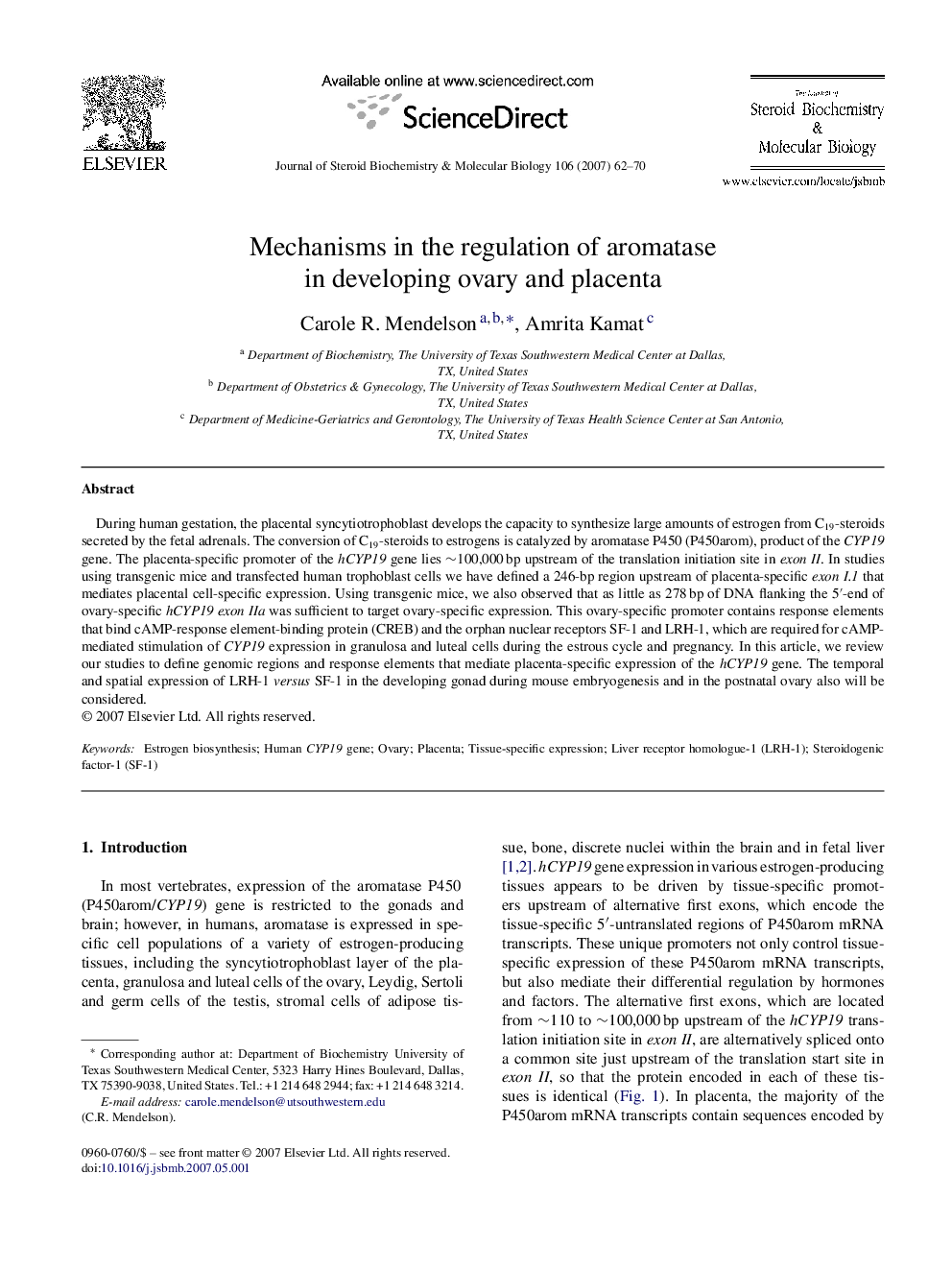| کد مقاله | کد نشریه | سال انتشار | مقاله انگلیسی | نسخه تمام متن |
|---|---|---|---|---|
| 1992237 | 1541074 | 2007 | 9 صفحه PDF | دانلود رایگان |
عنوان انگلیسی مقاله ISI
Mechanisms in the regulation of aromatase in developing ovary and placenta
دانلود مقاله + سفارش ترجمه
دانلود مقاله ISI انگلیسی
رایگان برای ایرانیان
کلمات کلیدی
موضوعات مرتبط
علوم زیستی و بیوفناوری
بیوشیمی، ژنتیک و زیست شناسی مولکولی
زیست شیمی
پیش نمایش صفحه اول مقاله

چکیده انگلیسی
During human gestation, the placental syncytiotrophoblast develops the capacity to synthesize large amounts of estrogen from C19-steroids secreted by the fetal adrenals. The conversion of C19-steroids to estrogens is catalyzed by aromatase P450 (P450arom), product of the CYP19 gene. The placenta-specific promoter of the hCYP19 gene lies â¼100,000Â bp upstream of the translation initiation site in exon II. In studies using transgenic mice and transfected human trophoblast cells we have defined a 246-bp region upstream of placenta-specific exon I.1 that mediates placental cell-specific expression. Using transgenic mice, we also observed that as little as 278Â bp of DNA flanking the 5â²-end of ovary-specific hCYP19 exon IIa was sufficient to target ovary-specific expression. This ovary-specific promoter contains response elements that bind cAMP-response element-binding protein (CREB) and the orphan nuclear receptors SF-1 and LRH-1, which are required for cAMP-mediated stimulation of CYP19 expression in granulosa and luteal cells during the estrous cycle and pregnancy. In this article, we review our studies to define genomic regions and response elements that mediate placenta-specific expression of the hCYP19 gene. The temporal and spatial expression of LRH-1 versus SF-1 in the developing gonad during mouse embryogenesis and in the postnatal ovary also will be considered.
ناشر
Database: Elsevier - ScienceDirect (ساینس دایرکت)
Journal: The Journal of Steroid Biochemistry and Molecular Biology - Volume 106, Issues 1â5, AugustâSeptember 2007, Pages 62-70
Journal: The Journal of Steroid Biochemistry and Molecular Biology - Volume 106, Issues 1â5, AugustâSeptember 2007, Pages 62-70
نویسندگان
Carole R. Mendelson, Amrita Kamat,